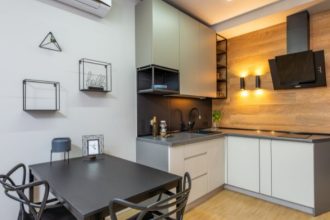Selling your home quickly doesn’t have to be a stressful process. With the right approach, you can attract buyer interest, highlight your home’s best features, and set yourself up for a fast sale. Here are eight essential tips to help you sell your home in less time. Read on.
1 Set the Right Price From The Get-Go
Overpricing can turn away serious buyers, while underpricing can lead to regret over missed profits. Start by researching nationwide, say the United States, as well as local market conditions. Next, compare recent sales of similar homes in your area. Look at different factors like mortgage rates, home equity values, local real estate agent insights, and so on.
Consulting an experienced realtor can give you valuable insights and an accurate market analysis. Agents understand current trends, buyer preferences, and pricing strategies, helping you set an appealing price that aligns with buyer expectations. By pricing your home strategically from the outset, you increase the chances of receiving offers quickly and avoid the need for time-consuming price reductions later.
If you don’t want to be stressed out with the home sale process, you can easily transact with companies that can guarantee a short sale. Say you’re in Massachusetts, you can look for buyers that can do quick house sale Newton or wherever you’re located. They can do a short sale by offering cash for your current home sans the need to undergo bank financing, inspections, and many more.
2 Make Your Home Picture-Perfect
Top-notch pics make a strong impact and can set your listing apart in a crowded market. Hiring a professional photographer is a smart investment—clear, well-lit photos capture the true beauty of your home, enticing buyers to schedule a viewing. Professional images emphasize spaciousness, natural light, and any unique features that make your property stand out.
3 Declutter And Depersonalize
When buyers walk through your home, they need to envision themselves living in the space. Personal items, clutter, and excess furniture can hinder this connection, making the home feel more like someone else’s than their future home. Start by removing family photos, knick-knacks, and other personal belongings. Pack up collections, awards, and anything that reflects your personality rather than the house’s potential.
Next, focus on decluttering each room to make it appear larger and more inviting. Store away bulky furniture, clear off countertops, and organize closets to showcase ample storage space. A neat, neutral environment appeals to a broader range of buyers, allowing them to focus on the home’s features and imagine their lives within its walls. A clutter-free home can make a positive impression and may even inspire a quicker decision.
4 Stage Key Areas
Focusing on high-impact areas can make a difference when doing home staging. The living room, kitchen, and master bedroom are often the most memorable spaces for buyers, so ensure these rooms feel inviting and functional. Arrange furniture to maximize flow, add fresh linens and neutral decor, and introduce accent pieces like stylish lamps, plants, or artwork.
Staging creates a lifestyle narrative that buyers can connect with, showing them the potential for comfort and style within each room.

5 Enhance Curb Appeal
Curb appeal shapes buyers’ initial impressions and can set the tone for the rest of the viewing. Start by sprucing up your front yard with basic landscaping—mow the lawn, trim bushes, and plant seasonal flowers. If your front door looks worn, consider giving it a fresh coat of paint in a welcoming color. Adding simple touches like a new doormat, outdoor lighting, or attractive house numbers can also elevate the entryway.
6 Focus on Quick, High-Impact Repairs
Walk through your home with a critical eye and identify any quick fixes. These minor issues might seem insignificant, but to buyers, they’re potential red flags that hint at possible neglect.
Taking care of small repairs shows buyers that the home has been maintained, building their confidence in the property. You don’t need to invest in major renovations; instead, focus on high-impact updates that add value without excessive cost. Fixing visible issues can give buyers peace of mind and encourage them to make a solid offer without hesitation.
7 Market Strategically
A well-executed marketing plan ensures that your listing reaches the right audience. Work with your agent to create a listing that highlights your home’s unique features, such as recent renovations, a large backyard, or an energy-efficient heating system. Include a detailed, inviting description that appeals to potential buyers’ lifestyles.
In addition to traditional listings, consider promoting your home on social media platforms. Sharing images and virtual tours on these platforms expands your reach, tapping into a wider audience.
8 Offer Flexible Showing Schedules
Flexibility can be a game-changer in selling your home quickly. Buyers often have busy schedules, so being open to a variety of showing times increases the chances of them viewing—and potentially falling in love with—your home.
Also, you can try out the following to be flexible with showings: keep your home ‘show-ready’ at all times, offer virtual property walkthroughs, do weekend open house schedules, be open for last-minute showing schedules, and many more.
Final Thoughts
Selling a home quickly doesn’t happen by chance—it requires preparation, flexibility, and a bit of strategy. By setting the right price, enhancing your home’s appeal, and the like, you can significantly increase your chances of a swift sale. Each step you take to showcase your home’s best features and eliminate potential buyer hesitations puts you closer to achieving your goal.















